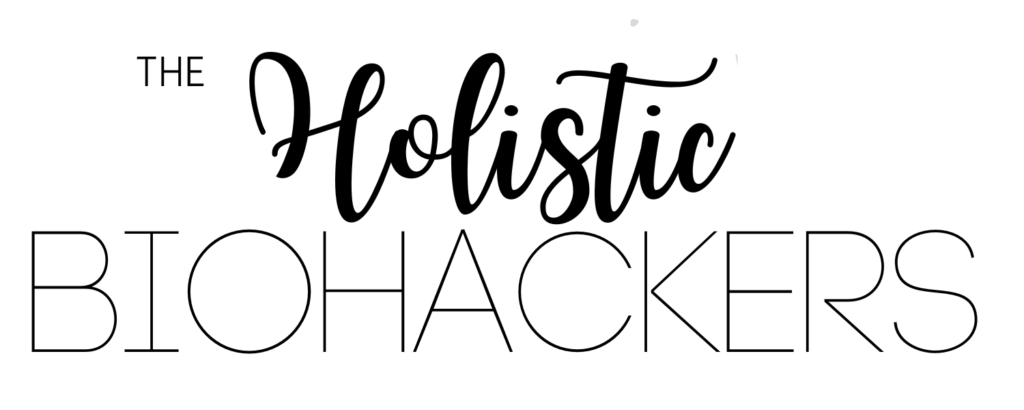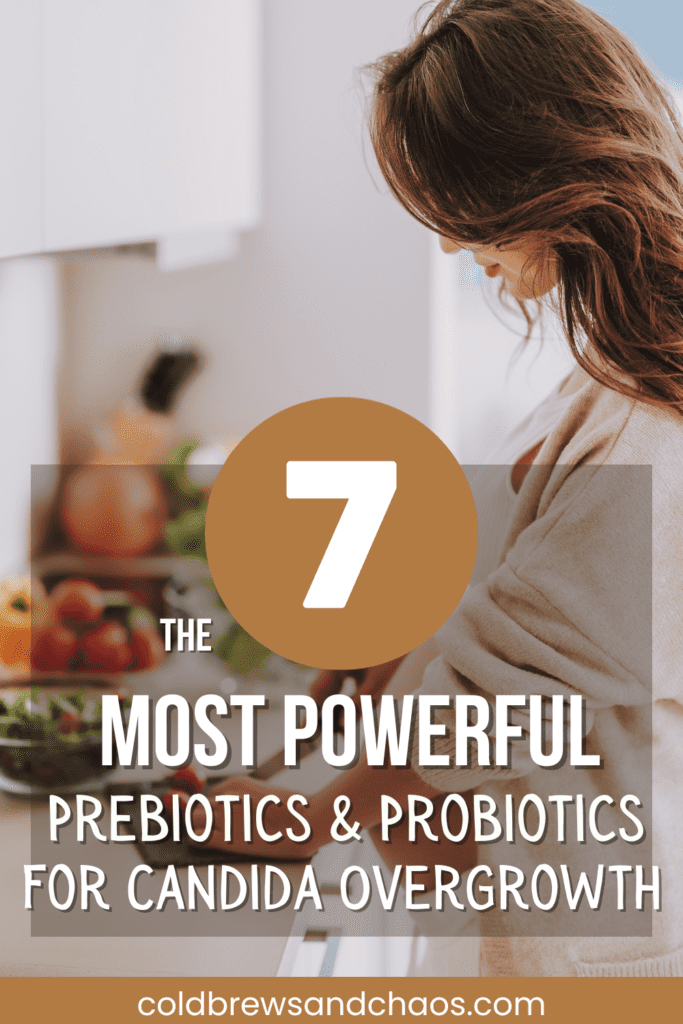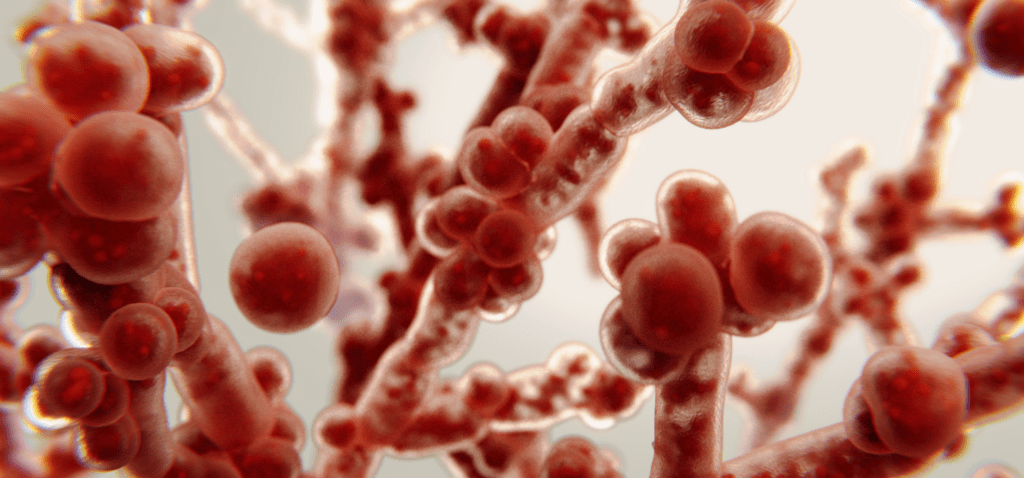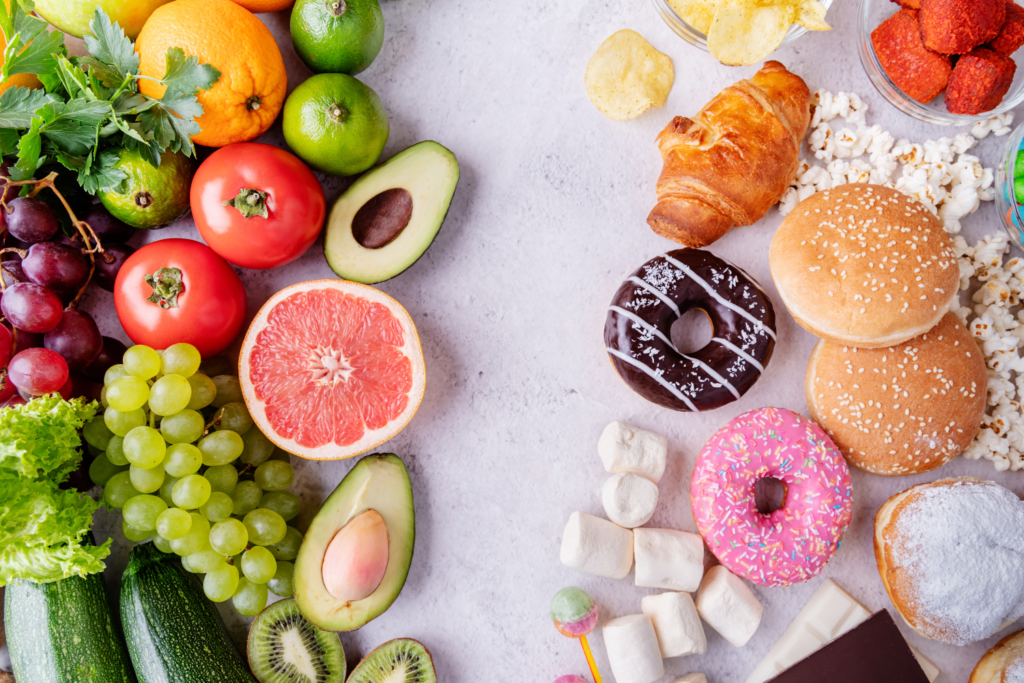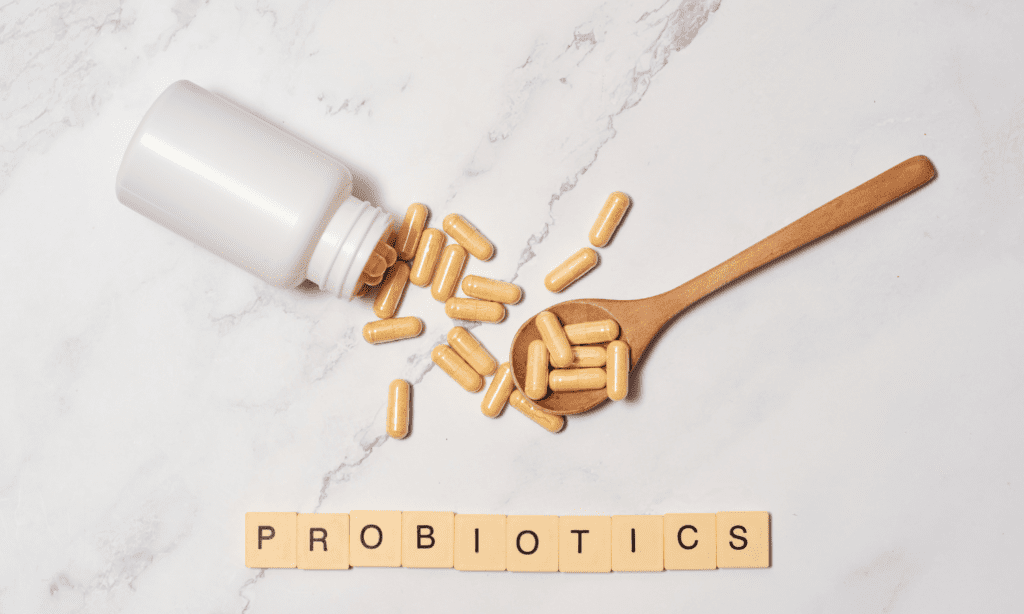The 7 Most Powerful Prebiotics and Probiotics for Candida Overgrowth
This post is all about the most powerful prebiotics and probiotics for candida overgrowth.
Candida overgrowth, or Candidiasis, can happen to anyone, anytime and anywhere in the body. Although there are many anti-fungal medications your doctor can prescribe, majority of them come with a laundry list of side effects.
These prescription medications may not only making you feel worse, but create even bigger health problems such as liver damage, heart rhythm changes, adrenal gland issues, skin rashes and more.
Fortunately, there are holistic ways to keep candida overgrowth at bay without taking a chance on the negative side effects of prescription medication. In some studies, prebiotics and probiotics for candida overgrowth have been shown to be as effective as prescription medication.
In this post, you will learn all about candida, what is candida overgrowth, what causes candida overgrowth, how to prevent candida overgrowth, the best foods for candida overgrowth treatment and prevention.
What is Candida?
Candida, specifically named “Candida albicans”, is a normal part of your body’s microbiome. It lives in your mouth, throat, vagina, urinary tract, skin and has a headquarters in the GI tract.
It plays a role in balancing your own ecosystem and aides in your own body’s digestion, immune function and disease prevention.
In a healthy individual, bacteria, yeast and other microorganisms have a symbiotic (or balanced) relationship with one another.
What is Candida Overgrowth?
If the microbiome becomes unbalanced, or there is a “dysbiosis”, excessive growth of the yeast can occur.
Risk Factors
There are several factors that can lead to candida overgrowth:
1.) Weakened immune system
Individuals with autoimmune disorders, HIV/AIDS, cancer treatment patients and patients taking immunosuppressive drugs are all more susceptible to infection due to their lowered immune system.
2.) Chronic stress
Continued stress for an extended period of time can weaken the immune system making you more susceptible to infection.
3.) Hormone imbalance, Pregnancy or Oral contraceptive use
Studies have shown that yeast thrives when the hormone estrogen is high. Some oral contraceptives are estrogen dominant and pregnancy also increases your estrogen levels (9).
4.) Antibiotic use
Although antibiotics are helpful in killing off bad bacteria, antibiotics also kill the “healthy” bacteria in your microbiome.
5.) Oral corticosteroid use
Corticosteroids (ex: asthma inhalers) can also play a part in disrupting the microbiome balance.
6.) Diabetes
People with diabetes suffer from poor blood sugar control which, in turn, fuels the candida.
7.) Excessive alcohol consumption
Alcohol is sugar, which feeds the candida.
8.) Poor hygiene
This can lead to warm, moist environments that are favorable for yeast thrive.
9.) High sugar and refined carbohydrate diet
Symptoms of Candida Overgrowth
Symptoms of yeast overgrowth vary widely as overgrowth can happen all over the body.
GI Candida Overgrowth:
-Bloating
-Nausea
-Diarrhea
-Skin rashes
– Fatigue
-Brain fog
-Anxiety/ Depression
-Irritability
-Poor sleep
-Joint pain
– Unexplainable weight fluctuations
Genital Candida Overgrowth:
-White, clumpy discharge
-Pain with intercourse
-Burning with urination
-Frequent UTI’s
Oral Candida Overgrowth:
-white patches on tongue
-redness and soreness of the mouth
-difficulty swallowing
Skin and Nail Candida Overgrowth:
-red, dry, itchy patches of skin (particularly in skin folds)
-blisters
-Nail infections causing nail discoloration or brittle nails
Preventing Candida Overgrowth
Preventing candida overgrowth naturally involves strict lifestyle changes. This is especially important if you have recurring candida infections or a stubborn infection that will not go away.
These lifestyle changes include:
-Drinking 8-10 glasses of water/day
– Practicing good hygiene
– Wearing dry, breathable, cotton clothing
-Managing stress, anxiety and/or depression
-Avoiding unnecessary antibiotic use if possible
and most importantly….
–CLEANING UP YOUR DIET
Changing your diet is the single most important way to prevent and naturally treat candida overgrowth.
Candida thrives on whatever we eat, so it is very important to ensure we choose our diet wisely.
This can be difficult because candida will influence our food cravings for its own survival benefit.
This can come in the form of cravings for sugar, carbs or alcohol- all of which will feed the candida making the overgrowth worse.
Prebiotics and Probiotics for Candida Overgrowth
As we all know, food is our body’s source of fuel, but it can also be an extremely powerful medicine.
They are broken up into 2 groups: prebiotics and probiotics.
PREBIOTICS
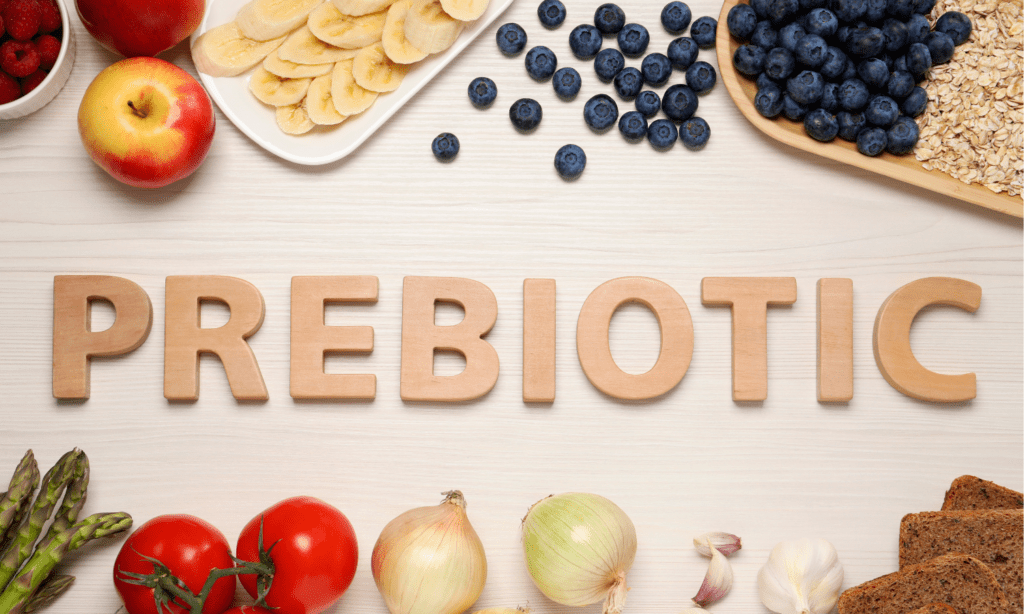
Prebiotics are a type of fiber in your food that feeds and encourages growth of good bacteria in your gut. Without a healthy number of bacteria keeping the candida at bay, an infection is very likely.
Think of these prebiotic foods as fertilizers for your microbiome!
1.) Non- Starchy Vegetables
These foods are very low in carbohydrates and sugars which starve the yeast. They are also very rich in fiber and nutrients for aiding in detoxification.
-cucumber
-kale
-asparagus
-broccoli
– brussels sprouts
-cauliflower
-spinach
-artichokes
2.) High- Quality Protein
Ensure these are organic and antibiotic free sources of meat.
-chicken
-grass-fed beef
-turkey
-eggs
-fish
3.) Garlic and Onion
Garlic contains “allicin”, a compound with natural antifungal properties (11). Both garlic and onion also contain “inulin”, a potent prebiotic which stimulates the growth of beneficial bacteria in your gut (12).
4.) Ginger
Research has shown that raw ginger has potent antifungal properties. One study (6) concluded that ginger was as effective as “Nystatin”, a prescription medication for treating oral candida. Ginger also has prebiotic properties that encourage the growth of good bacteria such as “Lactobacillus” and “Bifidobacterium” (10).
PROBIOTICS
Probiotics are classified as living microorganisms (healthy bacteria and yeast) that will further aide in balancing your microbiome.
1.) Fermented Foods
These foods are filled with tons of healthy bacteria, ready to fight off any unwanted overgrowth of candida in your system.
These include:
- Kimchi
- Kefir and Yogurt: Choose products that contain Lactobacillus rheutari (Stonyfield Farm Brand!) (3 and 4).
- Sauerkraut: Specifically in the refrigerated section, fermented in salt water, not vinegar (7).
- Miso
- Kombucha: Ensuring that the label says “raw”, only containing Saccharomyces boulardii and without fruit juice or added sugars (3).
- Pickles: Specifically in the refrigerated section, fermented in salt water, not vinegar.
Be cautious of fermented foods that claim to be healthy. These include yogurts and kombuchas with hidden sugars or sauerkraut and pickles fermented in white vinegar.
The safest way to ensure you are getting exactly what you want out of your fermented foods is to make your own!
Click here for more information on DIY fermented vegetables.
2.) Apple Cider Vinegar
Apple cider vinegar is a byproduct of fermenting juice from an apple. According to research it is a useful prebiotic and probiotic (if using raw ACV with mother) and has antifungal properties, specifically for oral candida (13).
Make sure to get “raw”, “unpasteurized” and with “mother” (or “SCOBY”- symbiotic culture of bacteria and yeast). SCOBY is the spider-web like mix at the bottom of the ACV bottle which contains a mixture of healthy bacteria and yeast.
And…
Coconut Oil
In one study (2), coconut oil was found to have almost the same if not more efficacy as Fluconazole, a prescription anti-fungal drug. This is helpful to many of us with resistant strains of candida that prescription anti-fungals no longer are effective on.
Start with 1 tsp per day either directly, with a meal, in a drink or as a salad dressing. You can gradually work yourself up to 1-2 tbsp per day. If you have any abdominal discomfort, reduce the amount.
Rules
Make sure to follow the two rules when choosing the foods on this list:
1.) When in doubt, go organic
This ensures what you are eating is free from chemicals, pesticides, antibiotics and hormones. All of which can have an effect of the gut microbiome balance.
2.) Choose unpasteurized over pasteurized
Pasteurization is a process that heats food and/or liquids to kill harmful bacteria. However, during this extra processing, the beneficial bacteria, as well as natural digestive enzymes, are also killed off.
Foods to Avoid
-Alcohol
-Processed foods
-High sugar fruit such as apples and oranges
– Caffeine
– Gluten
-Dairy products
-Allergens or foods you are sensitive to
Be wary of foods in this list that claim to be “natural”, “low fat”, “lite”, “no added sugar”, “non- GMO”, or “fortified”. Check the ingredients. Just because they say these words on the packaging, it does not mean they are healthy!
Die Off Symptoms
As you eat these foods and the overgrowth of candida begins to die, you may have what are called “die- off symptoms” also known as a “Herx reaction”.
These symptoms are your body’s reaction to the toxic material being released from the candida as they die.
These symptoms include:
-fever
-muscle aches
-headache
-weakness
-skin flushing
-skin rash
-anxiety or irritation
-low energy
-yeast infections that temporarily get worse
The best way to prevent these symptoms from happening is to gradually introduce the foods above into your diet.
If you do end up experiencing this reaction, ibuprofen, extra fluids, cold compresses and lots of sleep are helpful.
*DISCLAIMER*
All of the information in this post is based on my true and original experiences and extensive research from multiple sources.
I am a registered nurse, but I am not a medical doctor and none of the information in this post constitutes for medical advice in any way.
All diet and/or lifestyle decisions you make based on the information in this post should be discussed and approved by your doctor beforehand.
Resources:
- https://www.thecandidadiet.com/fermented-foods-a-shortcut-to-a-healthy-gut/
- https://pubmed.ncbi.nlm.nih.gov/17651080/
- https://www.culturedfoodlife.com/candida-and-cultured-foods/
- https://wellgard.co.uk/blogs/health-insiders/what-foods-contain-lactobacillus-reuteri
- https://www.yeastinfection.org/why-fermented-and-cultured-foods-with-candida/
- https://thescipub.com/pdf/ajassp.2009.1067.1069.pdf
- https://www.thecandidadiet.com/3-surprising-candida-remedies-in-your-local-store/
- https://draxe.com/health/candida-symptoms/
- https://www.ncbi.nlm.nih.gov/pmc/articles/PMC1360257/
- https://pubmed.ncbi.nlm.nih.gov/28678344/
- https://www.thecandidadiet.com/garlic/
- https://pubmed.ncbi.nlm.nih.gov/25498616/
- https://pubmed.ncbi.nlm.nih.gov/25219289/
- https://www.healthline.com/health/body/candida-die-off/
